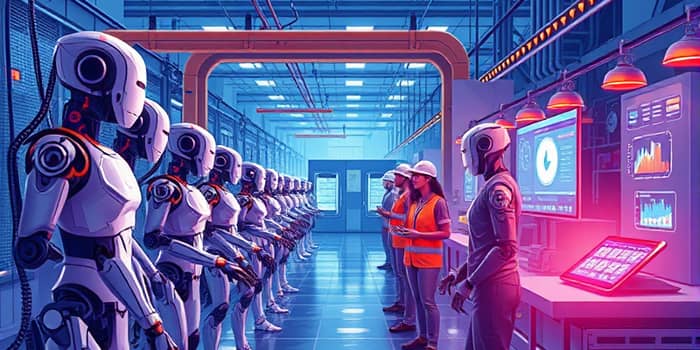
The manufacturing sector in the United States stands at a pivotal juncture. Severe labor shortages have forced companies to reevaluate their strategies and embrace automation at an unprecedented pace. As the industry contends with demographic shifts and a shrinking skilled workforce, automation emerges not only as a tool for survival but also as a catalyst for sustained growth and innovation.
By 2025, nearly 70% of U.S. manufacturers report being directly impacted by a labor shortage. This widespread challenge stems from multiple factors converging simultaneously:
With almost one in four manufacturing employees aged 55 or older, the industry faces a systemic long-term labor crisis that threatens production continuity and competitive edge.
The numbers paint a stark picture. By 2033, the U.S. manufacturing sector will need up to 3.8 million additional workers to maintain current output levels. Companies unable to fill roles experience unprecedented production delays and cost pressures, leading to higher unit costs, missed delivery deadlines, and elevated safety risks on the shop floor.
Automation has evolved from a niche enhancement to a strategic imperative. Investment in robotics, AI, and digital systems is reshaping factory floors and redefining operational norms. In 2025, nearly half of all U.S. manufacturers plan to implement AI solutions within two years, up from 47% in 2024. Today, 33% already leverage some form of machine learning or AI-driven analytics.
These technologies offer more than simple task replacement. They enable predictive maintenance and real-time quality control, ensuring downtime is minimized and product standards remain consistently high.
Manufacturers are channeling capital into a spectrum of technologies to maximize efficiency and resilience. Key investment areas include:
These allocations reflect a commitment to robust automation and AI strategies that drive scalability and adaptability across diverse manufacturing environments.
Data from industry surveys highlight substantial performance improvements. Over 90% of workers in automated settings report productivity boosts, while companies achieve an average 22% reduction in operating costs. Robotic process automation (RPA) alone delivers a 30–200% ROI within the first year of deployment.
Automation not only compensates for workforce gaps but also elevates overall operational excellence. Enhanced throughput, fewer quality defects, and streamlined workflows compound to deliver tangible competitive advantages.
Automation’s rise naturally raises concerns about job displacement. Global projections anticipate 92 million jobs could be automated by 2030, yet 170 million new roles are expected to emerge, resulting in a net gain of 78 million positions. Realizing this potential hinges on a concerted focus on workforce development:
By equipping teams with digital literacy and technical know-how, manufacturers can bridge skill gaps and ensure human talent remains integral to automated operations.
Despite clear benefits, nearly 70% of digital transformation initiatives fall short of their objectives. Success depends on more than technology procurement; it requires comprehensive change management frameworks. Critical success factors include:
Addressing these elements mitigates risks and maximizes the value derived from automation investments.
Policy interventions and economic incentives will play a pivotal role in shaping the industry’s trajectory. Tax credits for automation adoption, grants for workforce training, and public–private partnerships can accelerate progress. Moreover, emphasizing regional disparities—such as Asia-Pacific’s 39% share of automation revenues versus North America’s dominance in financial process automation—illuminates areas for targeted support and collaboration.
Manufacturers that harness data-driven insights and foster an adaptive culture will lead the next wave of industrial innovation. By addressing labor shortages with data-driven decision making and optimization, the sector can transform challenges into opportunities, ensuring resilience in an era of rapid change.
The convergence of demographic pressures and technological advancements is reshaping manufacturing’s future. Labor shortages, once seen as a looming threat, have become the impetus for transformative investment in automation and AI. Companies that embrace this shift—while investing in people, process, and policy—stand to thrive.
As the industry navigates this transition, the narrative evolves from scarcity to strategic renewal. By cultivating critical skilled workforce gap solutions, integrating cutting-edge technologies, and championing continuous learning, manufacturers can unlock unprecedented levels of productivity, quality, and growth. The future of manufacturing belongs to those who dare to innovate amidst adversity, turning labor challenges into engines of progress.
References













